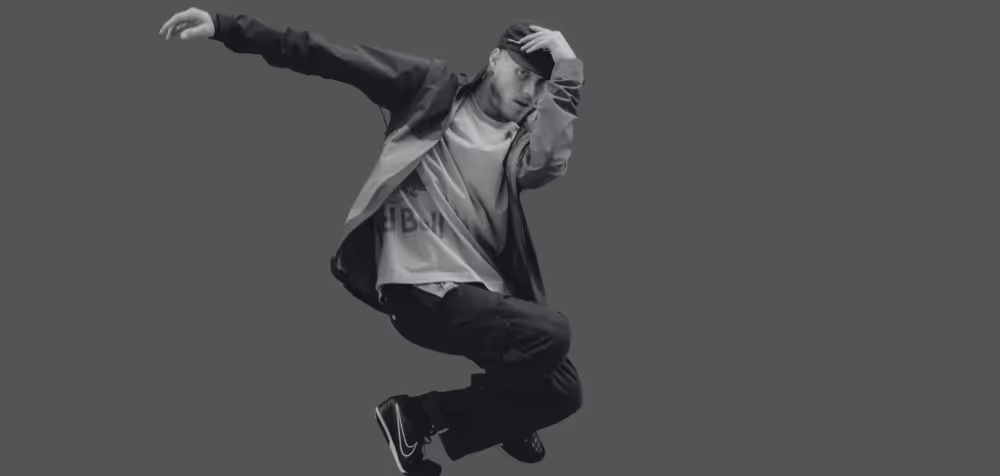“Trusted media means content that enriches people’s lives...That makes them smarter. That helps them understand a world where everything is competing for their attention.”
.avif)
In a world of content overload, misinformation, and disappearing newsstands, what does it mean to be a trusted media brand?
At Evolve London, Andy Marshall, CEO of Our Media, answered that question with calm clarity, and just enough wit to keep us leaning in.
“Trusted media means content that enriches people’s lives,” he said. “That makes them smarter. That helps them understand a world where everything is competing for their attention.”
That trust isn’t built overnight, and it doesn’t come from the platform or the tech. It comes from consistently showing up with quality, relevance, and empathy. And it turns out, if you do that well, everything else — monetization, partnerships, subscriptions, and even AI strategy — starts to fall into place.
As Darwin CX’s Cary Zel joked during their conversation, “The business used to be a three-legged stool — content, circulation, and ads. Now it’s… an octopus. Or maybe a couch. I’m not sure. But it definitely has more legs.”
Andy didn’t disagree. Today’s publishing revenue model is a complex web of subscriptions, events, licensing, digital partnerships, community engagement, ecommerce, and content syndication.
But the goal isn’t more tentacles for the sake of it. It’s building a diversified, sustainable ecosystem that still feels like a single brand experience.
Our Media has found meaningful scale through partnerships with digital platforms like Apple News, Readly, and MSN — but not at the expense of brand identity.
Andy described Apple News as today’s version of WH Smith’s newsstand. “You used to obsess over your cover lines to stand out on the shelf. Now, we optimize hook points for Apple’s algorithm.”
And it’s working. In April, Our Media was the only publisher ever to hold all five top stories in Apple News simultaneously — bumping the likes of the BBC, The Guardian, and The Wall Street Journal off the list. The top stories? One each from Countryfile, Science Focus, YourHomeStyle, Gardens Illustrated and Gathered - passion meets precision packaging.
Andy’s advice to publishers modernizing their operations: stop trying to be great at everything.
“We’re only world-class at one thing — content,” he said. “So we’ve outsourced everything else: tech, fulfillment, even some advertising operations.”
This focus allows Our Media to invest in their real differentiator: trusted editorial with a strong point of view, served across channels in ways that are deeply relevant to readers.
The now-iconic line from Andy’s session came during a discussion about a recent partnership with Trek Bicycles.
“Our team reviewed a brand-new bike that no one in the UK had ridden before,” Andy said. “Try getting AI to do that.”
That wasn’t just a mic-drop moment — it was a thesis. Authentic, original, boots-on-the-ground content can’t be scraped, synthesized, or hallucinated. You have to live it to write it. That’s the value.
Despite being an editorial-first company, Our Media has heavily invested in data. They have a dedicated data engineering team and use audience insights to shape campaigns, refine messaging, and even improve customer satisfaction.
One standout example? After consistently poor NPS scores for U.S. subscribers due to delivery issues, the team didn’t fix the logistics. They fixed the communication. By proactively emailing subscribers, explaining the issue, and providing a digital edition, NPS jumped by 20 points.
“We couldn’t directly fix the service. We just changed how we talked about it,” Andy said. “And that made all the difference.”
While other publishers are chasing mega-trade shows, Our Media is betting on the intimacy of real-world connection. Their “reader experiences” offer one-of-a-kind access, lunch in a historic garden with a famous gardener, for example, and create emotional moments that money alone can’t buy.
“These events aren’t scalable,” Andy admitted. “And that’s the point. They’re memorable. Aspirational. And they make people feel like part of a true community.”
Even readers who don’t attend engage deeply with the follow-up content, social posts, articles, podcasts, creating brand halo effects long after the event ends.
One audience member asked how editorial, marketing, and business teams at Our Media stay aligned. Andy’s answer? Purpose, process, and pilots.
They begin the monthly ‘Get Togethers’ with a reminder of their values and strategic goals. They are standardising internal workflows through checklists (“pilots use checklists — you can too”), and they’ve removed the tension between content and distribution by redefining roles around shared impact, not territory.
In Andy’s words: “If people believe in what they’re doing and understand how they fit into the larger system, collaboration becomes a lot easier.”
Andy doesn’t lose sleep over Big Tech, but he’s no fool. He pointed out that aggregators like Apple News can be great distribution partners — if the incentives stay aligned. But the real worry? Companies like Google, where the relationship is more extractive than collaborative.
His vision? A fairer system where AI companies pay for content via structured feeds — not scraping — and publishers retain attribution and referral benefits. “It doesn’t have to be adversarial,” he said. “Let’s build a win-win model.”
If there’s one thing Andy made clear, it’s this: the modern media company doesn’t need to be a tech unicorn or a content farm. It just needs to be intentional.
→ Be trusted.
→ Be clear about what you do best.
→ Use your data to deepen your humanity.
→ And stay close to your partners, your team, and your readers.
The publishing business may no longer be a three-legged stool, but it’s far from falling over. With the right mix of mission, monetization, and smart partnerships, it can stand stronger than ever.
